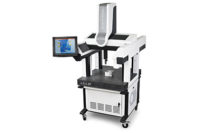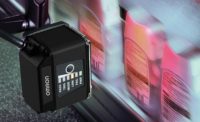Data collection has historically been completed manually. Before wireless gaging came onto the scene, staff would write down and physically log output data, a slow process with plenty of room for error. As technology progressed, operators manually typed data into computers, which also allowed for mistakes. Finally, wireless data-collection entered the picture, enabling users to simply press a button and send measurements directly to computers and other Bluetooth-enabled devices.
Wireless data acquisition uses mobile transmitters connected to measurement devices. Users can send measurement data directly to a phone, tablet or computer for analysis. They don’t have to deal with tangling cords or find hard-to-reach areas and can easily expand or deploy a measurement system within a manufacturing cell.
Wireless data collection also happens in real time, which shortens workflows and virtually eliminates human error. For example: DataSure 4.0, a wireless data collection system, uses short-wave radio frequencies to connect cell phones, computers and wireless electronic devices. Operators can automate data collection so users can send measurement data across hundreds of yards or over miles.
The system is a faster and more precise alternative to manual recording. Because it is wireless, operators can bring gages directly to their work cells, which is convenient and safe. It can interface with most major electronic measuring software and is compliant with Windows® based PCs.

If you’re new to wireless data collection and are interested in getting up to speed, familiarize yourself with some common wireless data collection terminology first.
Embedded Radios are radio transmitters/receivers located within a precision gage/ tool such as in the all-new Starrett W798 Calipers, W733.1 Micrometers and W2900 Indicators. Wireless measuring tools that include embedded radios make them easy to use for data collection.
End Nodes (Backpacks): If the electronic digital gage(s) you have do not feature embedded radios, then these gages will require an End Node (Backpack) to be mounted on the gage. End nodes are miniature radios that connect to the data output ports of electronic tools. The DataSure 4.0 end node plugs directly into digital tools, sends measurement data and verifies receipt with a green light. It also features IP67 dust and water protection, and is rechargeable.
Gateways are the link between the data collection tool and the computer. The DataSure 4.0 gateway is the central point for data collection and tool management and plugs directly into a PCs through a USB port.
Bridge extenders lengthen the system’s WiFi range in increments of 100 feet. These configurable devices amplify existing WiFi signals, enabling much faster speed, greater bandwidth and longer range for higher data throughput. The bridge extender and ½ of the remote gateway can connect PLC’s directly to a computer for high speed serial data transmission. (In this system configuration, DataSure software is not needed to perform this function.) The DataSure 4.0 bridge extenders can optionally be used to ensure system robustness by providing alternate signal paths in noisy environments, expanding the range of the system and route the radio transmissions around large obstructions in the shop or surrounding landscapes.
Repeaters are an optional element to extend the range of the wireless network around large, man-made or natural obstacles that would otherwise block radio transmissions. The repeater basically repeats the signal coming from either the bridge extender or remote gateway. Repeaters can connect directly to PLC’s and other high speed serial automation equipment for real time data collection or remote machine operation. For even greater distances, Yagi Long Range Antennas can be incorporated in the scheme.
Enterprise middleware connects software mechanisms or enterprise applications. It is the level of software between the operating system and the applications on a computer network. It typically supports intricate business software applications. Wireless systems must seamlessly interface with enterprise middleware to comply with Industry 4.0 and to enable operators to do freely their jobs. As Industry 4.0 evolves, it will demand faster and more automated data measurement, collection and storage.
Continuous communication: Wireless data collection should deliver more than just bursts of communication. An effective gaging implementation delivers continuous communication or streaming between a gage and the data analysis device. Gages that can be enabled to stream data rather than simply take data snapshots are key. Streaming data helps on-machine verification and other types of measurements. It enables gages to measure bores in multiple positions and axis, while continuously sending live data.




